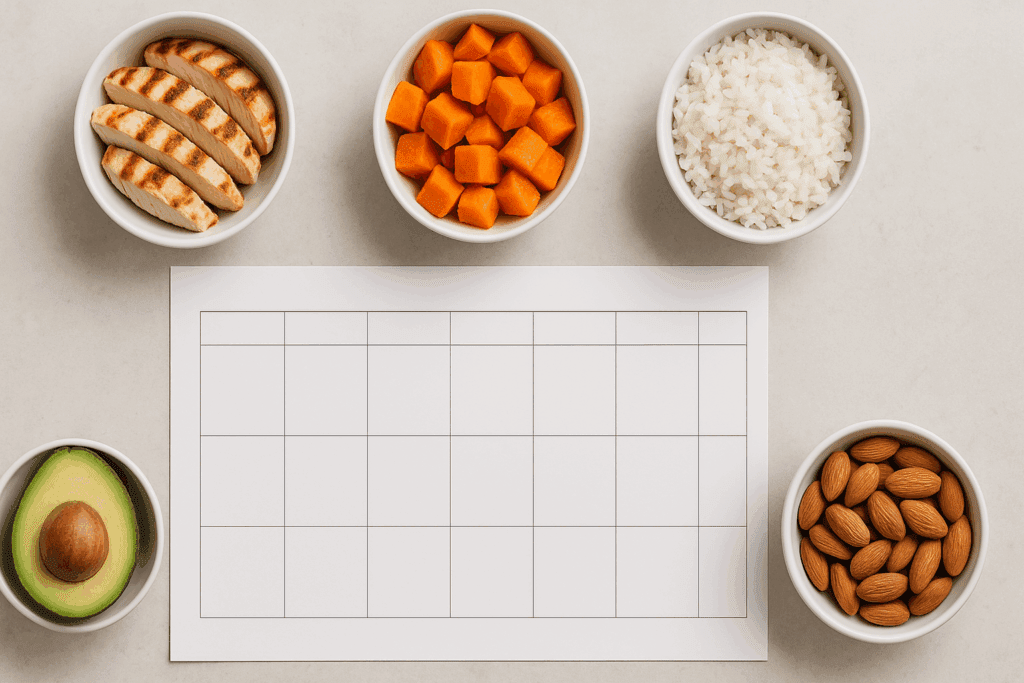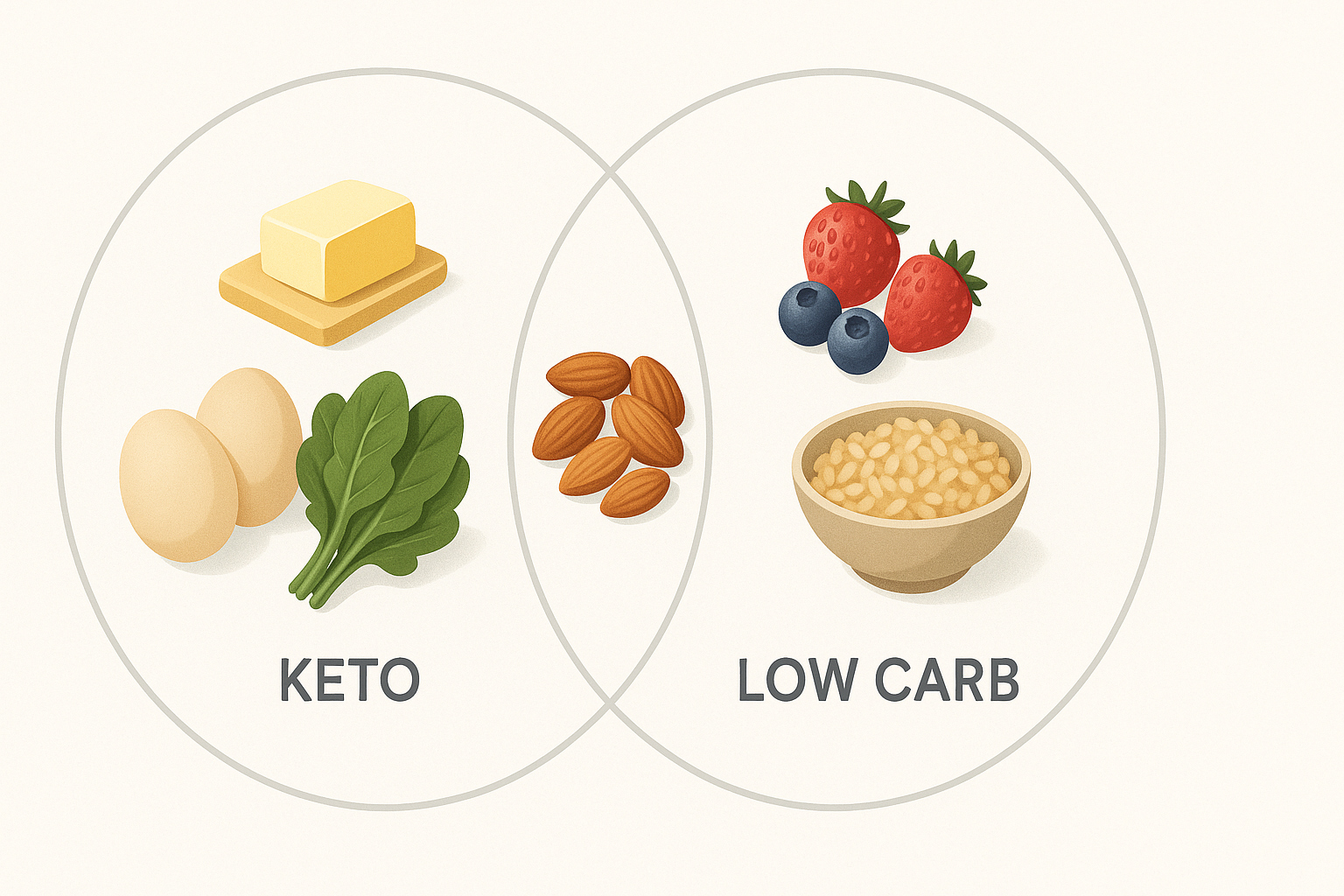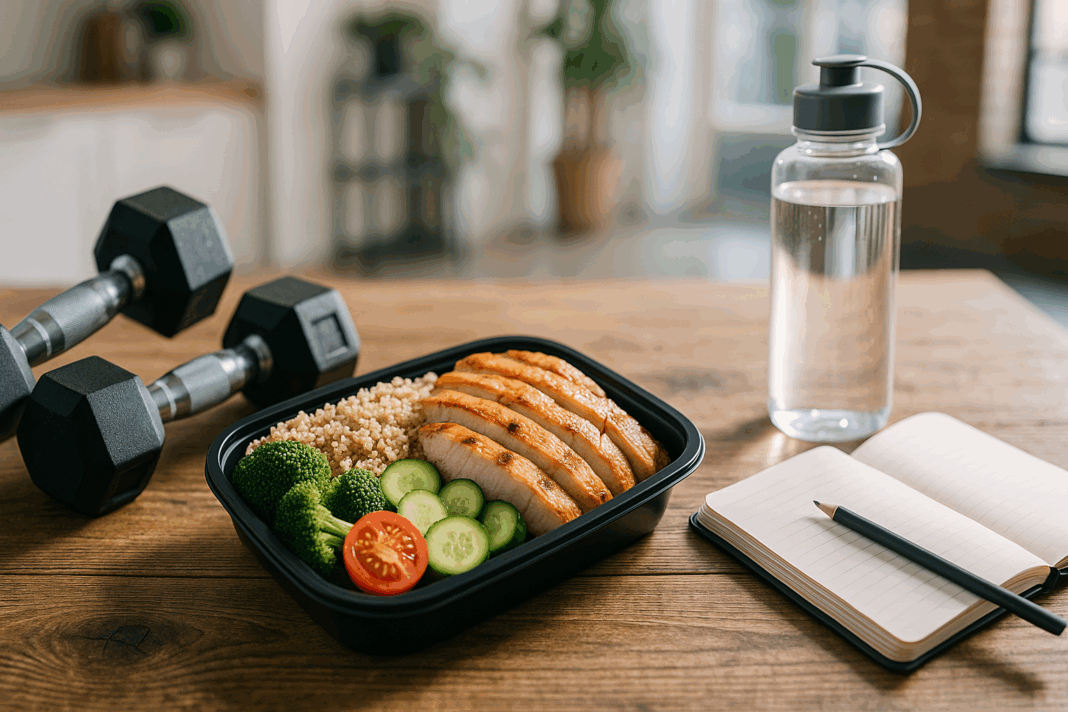Achieving sustainable weight loss and improving overall health require more than just cutting calories or overexerting yourself in the gym. It calls for a strategic, well-balanced approach that combines mindful eating with intelligent exercise programming. This comprehensive 30 day fat loss meal plan and workout guide offers a scientifically grounded and experience-driven roadmap for achieving real, measurable results. Tailored to fit a health-conscious, college graduate-level audience, this article draws on EEAT principles to provide medically accurate insights, trustworthy guidance, and actionable strategies under the ‘Mindful Eating & Nutrition’ and ‘Healthier Lifestyle’ categories.
You may also like: Smart Meal Prep for Weight Loss: Expert-Approved Lunch Ideas and Recipes to Stay on Track
Why Fat Loss Requires More Than Calorie Counting
Fat loss is often oversimplified as a matter of “calories in versus calories out,” but this reductionist model fails to account for the hormonal, metabolic, and psychological components that influence weight regulation. A successful 30 day fat loss meal plan must acknowledge these intricacies and support physiological balance through nutrient-dense, whole foods. Just as importantly, any effective workout diet plan for weight loss should enhance—not deplete—your body’s capacity to perform, recover, and adapt.
Understanding that not all calories are created equal is essential. Consuming 2,000 calories from ultra-processed foods affects the body very differently than 2,000 calories from lean proteins, fibrous vegetables, and healthy fats. Additionally, a mismatch between dietary composition and workout intensity can hinder both fat loss and muscle retention. The ideal meal plan for working out and losing weight respects the body’s need for macronutrient diversity, micronutrient sufficiency, and metabolic flexibility.

The Science of Strategic Meal Planning
At the core of every successful 30 day fat loss meal plan is the strategic cycling of macronutrients to support exercise, metabolism, and hormonal health. Protein intake should be prioritized to preserve muscle mass, particularly when in a calorie deficit. Research suggests that 1.6–2.2 grams of protein per kilogram of body weight per day is optimal for fat loss and lean mass retention.
Carbohydrates should not be demonized; instead, they should be periodized according to workout demands. On high-intensity training days, increasing complex carbohydrate intake—think quinoa, lentils, and sweet potatoes—can replenish glycogen stores and enhance performance. On rest or light activity days, lower-carb meals can promote greater fat oxidation. Meanwhile, healthy fats from avocados, nuts, seeds, and olive oil are critical for satiety and hormone synthesis.
For individuals interested in comparing dietary strategies, questions like “is keto a low carb diet” or “is a keto diet sustainable” often arise. While a low carb diet and keto diet share similarities, the ketogenic diet vs low carb model differs in that keto drastically reduces carbs to encourage ketone production. This can be effective for some individuals but may not suit everyone’s long-term metabolic and psychological needs. Instead of blindly adopting one style, it’s essential to evaluate whether keto or low carb supports your lifestyle, energy levels, and long-term adherence.
Workout Programming That Promotes Fat Loss and Lean Muscle
An effective workout and diet plan for fat loss must be structured with progressive overload, metabolic conditioning, and recovery in mind. Resistance training is paramount. Lifting weights at least three times per week not only helps maintain lean muscle mass but also elevates resting metabolic rate. Compound movements such as squats, deadlifts, and push presses are especially beneficial.
Cardiovascular exercise should complement—not dominate—your routine. While steady-state cardio can increase daily caloric expenditure, high-intensity interval training (HIIT) has been shown to accelerate fat loss more effectively in shorter durations. The key lies in blending aerobic and anaerobic modalities to foster metabolic adaptation.
A common mistake in workout diet plans for weight loss is neglecting recovery. Sleep, mobility work, and proper nutrition are non-negotiables. Without adequate recovery, cortisol levels can spike, leading to fat retention and muscle breakdown. Thus, any 30 day fat loss meal plan should be synchronized with your training schedule to maximize results.

How to Structure the 30 Day Fat Loss Meal Plan
Week 1 focuses on recalibrating hunger cues and blood sugar stability. Meals include lean protein (e.g., chicken breast, tofu), fiber-rich vegetables (e.g., broccoli, kale), and moderate healthy fats. This phase eliminates processed sugars and reduces refined carbs to ease insulin resistance.
Week 2 introduces more varied carbohydrate timing. High-carb meals are paired with intense workouts to optimize performance. This aligns with metabolic flexibility and supports glycogen replenishment. Common dishes might include salmon with sweet potatoes or black bean quinoa bowls.
Week 3 emphasizes caloric cycling. Slight reductions in calorie intake on non-training days are balanced with nutrient-dense refeed meals post-exercise. This week also includes digestion-friendly habits such as mindful chewing, hydration, and meal spacing.
Week 4 shifts focus to sustainability. This is when the 30 day fat loss meal plan transitions from a strict structure to a more intuitive model. You’ll start incorporating lessons learned—like how to adjust carbs based on training intensity and how to identify satiety signals without calorie counting.
This adaptable framework offers flexibility while preserving structure. As you refine your approach, you’ll start to recognize which foods energize you, which ones impair recovery, and how your body responds to dietary shifts.

Integrating the Best of Keto and Low Carb Principles
It’s no surprise that debates around “keto diet vs low carb diet” persist in health circles. For some, ketogenic diets result in rapid fat loss due to reduced insulin levels and suppressed appetite. For others, they feel restrictive and unsustainable, prompting the question: is keto a good diet long term?
Instead of choosing sides, it’s wiser to extract what works from each philosophy. If you’ve asked, “is keto no carbs?”, know that the answer is nuanced. Keto drastically limits carbs but doesn’t eliminate them entirely—fiber-rich vegetables and trace carbs from nuts are still included. Similarly, not all low carb diets reach ketosis, but they still help reduce blood sugar fluctuations.
The advantage of combining these principles within a structured 30 day muscle building diet or fat loss program lies in promoting metabolic efficiency. This dual approach enables the body to alternate between fat and glucose as fuel, optimizing energy utilization without the dietary rigidity.
Supporting Fat Loss with Evidence-Based Supplementation
While whole foods should form the foundation of any diet, targeted supplementation can support specific fat loss goals. Protein powders, particularly whey or plant-based blends, provide convenient options for meeting daily protein needs. Omega-3 supplements can support anti-inflammatory pathways, while magnesium may enhance sleep quality and insulin sensitivity.
Caffeine, in moderation, can promote fat oxidation and exercise performance, especially when consumed pre-workout. However, reliance on stimulants can backfire if it disrupts sleep or heightens anxiety. Always consult with a qualified health professional before adding supplements to your routine.
Crucially, no supplement can replace the physiological benefits of consistent sleep, daily movement, and balanced nutrition. These pillars remain at the core of every scientifically sound workout diet plan for weight loss.

Adherence, Mindfulness, and Sustainable Success
No plan—regardless of how effective—works without adherence. The most sustainable workout and diet plan for fat loss is one that you can maintain beyond the initial 30 days. This requires mindfulness, self-compassion, and an ability to adapt. Rather than framing setbacks as failures, see them as feedback.
Eating mindfully doesn’t mean being rigid; it means being aware. It’s about slowing down, recognizing fullness cues, and eating with intention rather than compulsion. Similarly, working out with mindfulness involves tuning into how your body feels—knowing when to push and when to pull back.
Long-term fat loss success isn’t about achieving perfection. It’s about building sustainable habits, informed by science and guided by intuition. Whether you’re refining your meal plan for working out and losing weight or exploring whether a keto diet is sustainable, the focus should remain on consistency, personalization, and mental well-being.

Frequently Asked Questions: 30 Day Fat Loss Meal Plan and Workout Guide
1. Can I still see results on a 30 day fat loss meal plan if I have a sedentary job?
Absolutely. While physical activity enhances calorie expenditure, the majority of fat loss successstems from nutritional consistency and metabolic regulation. A sedentary job may require tighter control over caloric intake and macronutrient balance, but you can still tailor your meal plan for working out and losing weight by focusing on nutrient-dense foods that regulate blood sugar and minimize energy crashes. Including low-glycemic vegetables, lean proteins, and healthy fats throughout the day can help sustain satiety and energy. Pairing this with short, intentional workouts—such as resistance band circuits or walking breaks—can reinforce your 30 day fat loss meal plan even with limited movement.
2. How do I adjust my workout diet plan for weight loss during hormonal fluctuations or menstruation?
Hormonal shifts throughout the menstrual cycle can significantly influence energy levels, cravings,and water retention. During the luteal phase (post-ovulation), many women experience heightened appetite and decreased insulin sensitivity. This is a strategic time to increase protein and healthy fats in your 30 day muscle building diet while reducing processed carbs to maintain blood sugar control. Workouts can also be adapted—strength training may feel more manageable than high-intensity cardio. Listening to your body and modifying your workout and diet plan for fat loss accordingly can reduce inflammation and support hormonal balance without derailing your goals.
3. What are some psychological strategies to stick with a meal plan for working out and losing weight?
Sustainability is often more psychological than physical. Anchoring your goals to intrinsic motivation—such as improved confidence or disease prevention—can reinforce adherence. Using visual cues like a progress journal or mood tracker can highlight benefits beyond the scale. Practicing mindful eating techniques, such as eating without distractions and identifying emotional hunger, enhances your relationship with food. Integrating small, non-food rewards for consistency reinforces positive behavior, making your 30 day fat loss meal plan more than a temporary obligation—it becomes a source of empowerment.
4. Are cheat meals compatible with a structured 30 day muscle building diet?
Yes, but context is key. In a well-structured workout diet plan for weight loss, a controlled refeed or“cheat meal” can serve both metabolic and psychological functions. Physiologically, occasional overfeeding can temporarily boost leptin, a hormone that regulates hunger and metabolism. Psychologically, it offers relief from dietary rigidity and can renew motivation. However, it’s essential to plan these meals intentionally rather than impulsively. Choosing higher-carb meals around intense workout days allows the body to utilize the excess energy for recovery and muscle growth.
5. Can intermittent fasting enhance results from a workout and diet plan for fat loss?
When implemented correctly, intermittent fasting can complement your 30 day fat loss meal plan byimproving insulin sensitivity and enhancing fat oxidation. Time-restricted eating, such as an 8-hour feeding window, allows your body to spend more time in a fasted, fat-burning state. This can be particularly effective when paired with fasted morning workouts that rely on stored fat for energy. However, it’s vital to ensure that overall caloric and macronutrient needs are still met within the feeding window. The goal is not to eat less but to eat more strategically.
6. How should I adapt a 30 day muscle building diet if I’m training twice a day?
Training twice daily requires meticulous planning and recovery-focused nutrition. Your meal plan forworking out and losing weight must emphasize nutrient timing, ensuring adequate protein and carbohydrate intake both pre- and post-session. For morning workouts, opt for a fast-digesting carb like banana with whey protein, followed by a larger post-workout meal. In the evening, a balanced dinner with slow-digesting carbs and lean protein supports recovery overnight. Supplementation—like branched-chain amino acids (BCAAs) between sessions—can also preserve muscle mass and prevent fatigue.
7. What’s the role of gut health in a workout diet plan for weight loss?
Emerging research underscores the connection between gut microbiota and fat loss outcomes. A 30day fat loss meal plan that includes fermented foods like kimchi, kefir, or sauerkraut may improve digestive efficiency and reduce inflammation. These foods promote microbial diversity, which in turn can affect appetite regulation and nutrient absorption. Prebiotic fiber from sources like garlic, onions, and leeks also support gut health, indirectly supporting your meal plan for working out and losing weight. As your gut becomes more efficient, you may notice improved energy, mood, and body composition.
8. Can I build muscle while following a 30 day fat loss meal plan?
Yes, it’s possible to build lean muscle and reduce fat simultaneously through a strategy known asbody recomposition. This requires a workout and diet plan for fat loss that carefully balances calorie intake around maintenance while maximizing protein and strength training. While scale weight may not drop dramatically, body composition improves visibly as fat mass decreases and muscle definition increases. Focusing on compound lifts and progressing in volume or resistance each week ensures that muscle-building signals are activated. Your 30 day muscle building diet should support this with 1.6–2.4 grams of protein per kilogram of body weight daily.
9. How do travel and social commitments impact adherence to a workout and diet plan for fat loss?
Travel and social events introduce unpredictability, but flexibility and planning mitigate setbacks. Aportable version of your meal plan for working out and losing weight might include protein bars, nut butter packets, or shelf-stable tuna. When dining out, prioritize grilled lean proteins, fibrous veggies, and whole grains while moderating sauces and fried items. If workouts are disrupted, shift focus to bodyweight circuits or long walks.
10. How do I transition from a 30 day fat loss meal plan to long-term maintenance?
After completing an intense 30 day muscle building diet or fat loss protocol, transitioning requiresdeliberate reverse dieting to restore metabolic flexibility. Gradually increasing calories—especially from complex carbs—allows your body to adjust without rapid fat regain. Psychologically, shifting focus from strict tracking to intuitive eating can preserve progress while fostering a healthier relationship with food. Continuing with a structured yet flexible workout and diet plan for fat loss helps maintain lean mass and metabolic rate. Ultimately, sustainable transformation is about evolving your plan to match your lifestyle, not reverting to old patterns.

Final Reflections: The Key to Lasting Results Lies in Personalization and Balance
In today’s saturated wellness market, it’s easy to fall into the trap of rigid programs and unrealistic expectations. However, true transformation lies in understanding your body’s unique responses, nutritional needs, and psychological triggers. This 30 day fat loss meal plan and workout guide doesn’t offer a one-size-fits-all solution—it empowers you with the tools to create a sustainable lifestyle.
By integrating the strengths of keto and low carb diets while honoring your body’s need for flexibility, you can achieve a healthy balance that supports fat loss, muscle retention, and long-term well-being. Remember, is keto a low carb diet? Yes—but it’s not the only path. And is a keto diet sustainable? Only if it works for you.
This guide encourages you to move forward with clarity, confidence, and compassion. Whether you’re embarking on your first transformation or refining your existing routine, let this be a starting point for a more mindful, health-driven life. The journey doesn’t end after 30 days—it evolves with you.
Further Reading:
Simple 30-Day Plan for Weight Loss, According to a Dietitian
The 30-Day Weight Loss Challenge: Easy Diet Plans and Workouts

